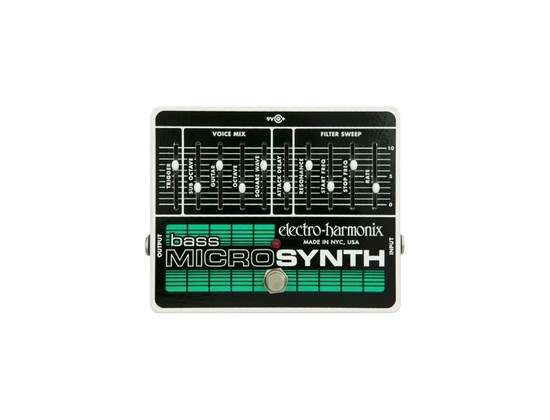
Like a fuzz pedal, it works better with some than others or may not work at all. I have tried combining it with boost pedals at the pre/post stage, with varied results. The pedal has no general volume boost available, which potentially renders the pedal unsuitable for live situations. In most of the live situations I'm in, I need to have a drastic rise in volume when switching from rhythm to solos.

The pedal essentially works on unity-gain levels. There is however one drawback in the current design. It'll keep you aware of your legato technique and phrasing, which can only expand your musicality.

You will have to change your playing to adapt to this pedal, which is a good thing.

It has some really cool features that allow you to compete with or completely replace the lame keyboardist in your band -) Think the solo on Queen's "I Want To Break Free" - it can easily be replicated with the MicroSynth! And although it is ideal to have an amp set up that is capable of responding to the frequencies it generates, it will still sound great in smaller amps and less-than-ideal set ups. I have always loved this pedal from the time I first played the predecessor version way back in the day. The dimensions are 143 x 119 x 60 mm (5.6 x 4.7 x 2.4 inches) - for some reason it was impossible to find the actual pedal's dimensions listed anywhere online! It came with its own power supply, but with the 9 V negative-center DC setting, I was able to daisy-chain it to the power supply of my other pedals without any problem. Kudos to Electro Harmonix for reducing the physical size in this new version.


 0 kommentar(er)
0 kommentar(er)
